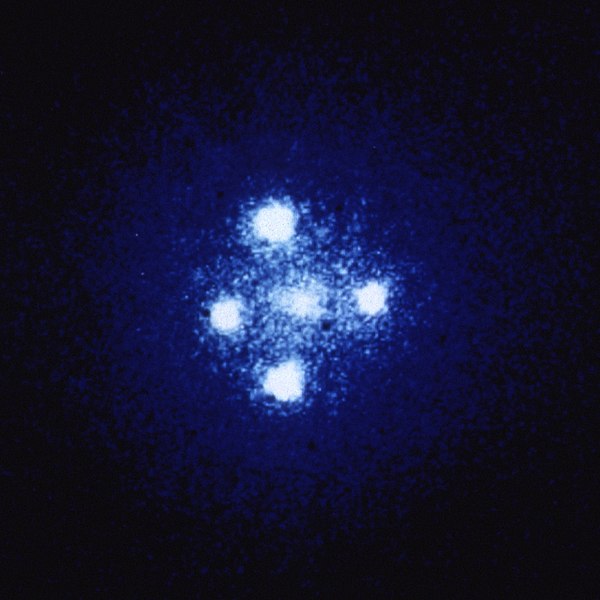John Archibald Wheeler was an American theoretical physicist. He was largely responsible for reviving interest in general relativity in the United States after World War II. Wheeler also worked with Niels Bohr to explain the basic principles of nuclear fission. Together with Gregory Breit, Wheeler developed the concept of the Breit–Wheeler process. He is best known for popularizing the term "black hole" for objects with gravitational collapse already predicted during the early 20th century, for inventing the terms "quantum foam", "neutron moderator", "wormhole" and "it from bit", and for hypothesizing the "one-electron universe". Stephen Hawking called Wheeler the "hero of the black hole story".
Wheeler in 1985
Loading tubes of the Hanford B Reactor
The "Sausage" device of Ivy Mike nuclear test on Enewetak Atoll. The Sausage was the first true hydrogen bomb ever tested.
General relativity, also known as the general theory of relativity and Einstein's theory of gravity, is the geometric theory of gravitation published by Albert Einstein in 1915 and is the current description of gravitation in modern physics. General relativity generalizes special relativity and refines Newton's law of universal gravitation, providing a unified description of gravity as a geometric property of space and time or four-dimensional spacetime. In particular, the curvature of spacetime is directly related to the energy and momentum of whatever matter and radiation are present. The relation is specified by the Einstein field equations, a system of second order partial differential equations.
Einstein cross: four images of the same astronomical object, produced by a gravitational lens
Artist's impression of the space-borne gravitational wave detector LISA
This blue horseshoe is a distant galaxy that has been magnified and warped into a nearly complete ring by the strong gravitational pull of the massive foreground luminous red galaxy.
Projection of a Calabi–Yau manifold, one of the ways of compactifying the extra dimensions posited by string theory







